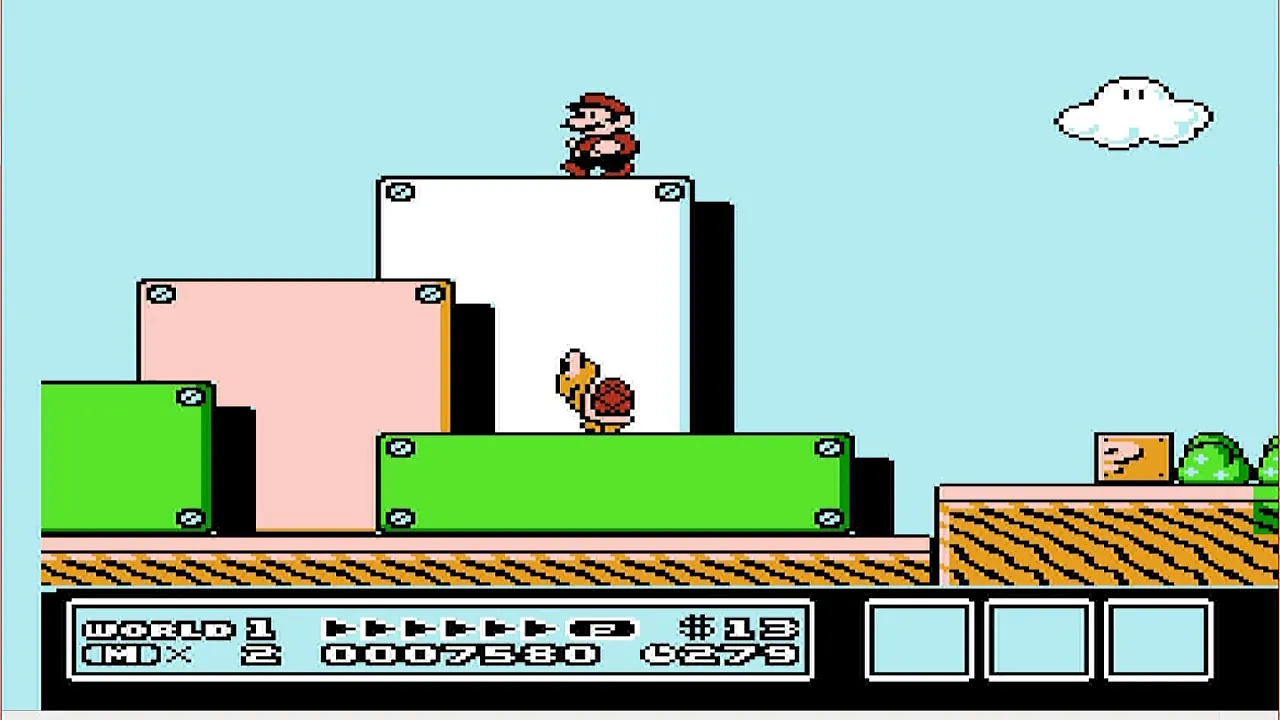




Description
Super Mario Bros. 3, originally released for the Nintendo Entertainment System (NES) in 1988, is an undisputed classic of the platform genre that has transcended generations of consoles and players. This title was not only a milestone in video game history for its innovative gameplay and level design, but it also introduced mechanics that have remained standard in the series.
Technically speaking, Super Mario Bros. 3 offered a noticeably improved visual and sound experience compared to its predecessors, taking full advantage of the NES hardware. With a richer color palette and more detailed sprites, the game featured varied thematic worlds and iconic characters that have endured in the collective imagination.
The availability of Super Mario Bros. 3 has expanded beyond the NES, being found on platforms such as the Wii, Nintendo 3DS, Wii U, and most recently, the Nintendo Switch through the Nintendo Switch Online service. Each new version has sought to preserve the essence of the original game, while some have included improvements such as improved graphics and additional features such as netplay.
The plot of Super Mario Bros. 3 is simple but captivating: Mario and Luigi embark on an adventure to save Princess Peach and the rulers of seven different kingdoms from the antagonist Bowser and his children, the Koopalings. Throughout the game, players must navigate through eight unique worlds, each with their own challenges and enemies.
One of the most notable improvements in Super Mario Bros. 3 was the introduction of a world map, which allowed players to select different levels and discover secret routes. In addition, the game incorporated a variety of power-ups that transformed Mario and gave him new abilities, such as the raccoon suit that allowed him to fly, or the frog suit that improved his mobility underwater.
However, not all versions of the game were identical. The Japanese version, for example, is known to be more challenging than the Western version, with differences in the color palette and level layout. Despite these variations, the core of the game has remained consistent, offering a challenging and rewarding experience for players.
Super Mario Bros. 3 has also had a significant cultural impact, inspiring an animated television series and a wide range of merchandise. Its legacy extends to this day, being frequently cited as one of the greatest video games of all time and an outstanding example of game design.
History
The story of Super Mario Bros. 3 focuses on Mario's (and Luigi's, if played in two-player mode) adventure to save Princess Peach, who has been kidnapped by the evil Bowser. The game takes place in the Mushroom Kingdom, made up of eight unique worlds, each with its own set of levels and challenges.
Mario begins his journey in the Grass World, a place full of green grasslands and enemies like Goombas and Koopas. As he progresses, he discovers that each world has a king who has been transformed into a creature by one of Bowser's children, the Koopalings. Mario must retrieve each Koopaling's magic wand to return the king to his original form.
After overcoming the challenges of the Desert World, the Water World, the Giant World, the Sky World, the Earth World, and the Pipe World, Mario arrives at the Dark World, where Bowser's castle is located. . Here, Mario faces even more dangerous obstacles and formidable enemies on his way to the final showdown with Bowser.
In the game's climax, Mario must navigate through a maze of rooms and traps in Bowser's castle before facing the king of the Koopas in a decisive battle. Using his wits and the skills acquired throughout the game, such as the Tanooki suit that allows him to fly and the frog suit that improves his swimming skills, Mario manages to defeat Bowser and rescue Princess Peach.
With the princess safe and the kingdoms of the Mushroom Kingdom freed from the Koopalings' control, Mario and Luigi are celebrated as heroes. The story concludes with a sense of joy and the promise of more adventures to come for the brave plumber brothers.

.webp)
.webp)